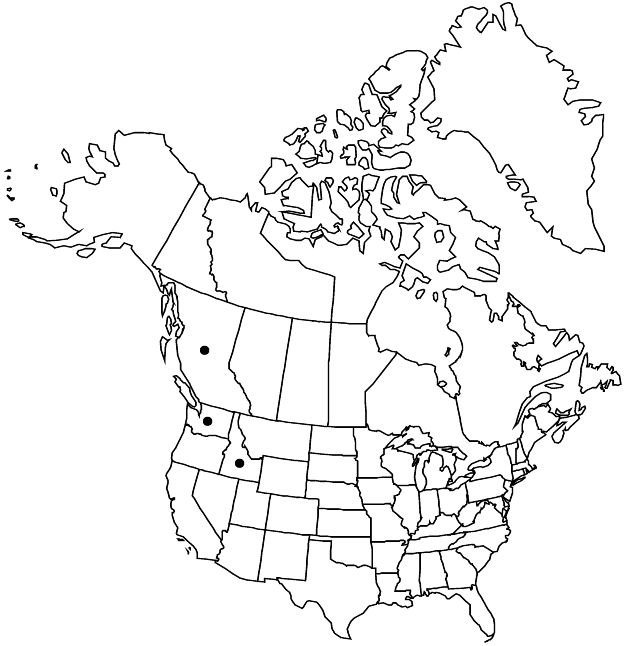Mentzelia laevicaulis var. parviflora
in C. L. Hitchcock et al., Vasc. Pl. Pac. N.W. 3: 455. 1961.
Leaf blades 17.4–196 × 6.7–24.7 mm, widest intersinus distance 2.4–7.2 mm; proximal oblanceolate, lanceolate, or elliptic, margin lobes 14–24, 3.5–6.3 × 3.1–6.6 mm; distal with base clasping, margin lobes 6–14, 2.2–13.8 × 0.8–6.2 mm; adaxial surfaces with simple grappling-hook and needlelike trichomes. Bracts 8.4–25 × 1–1.3 mm, margins entire or toothed. Flowers: petals 23.5–40 × 3–9 mm; 5 outermost stamens 17.7–29 × 0.5–1.4 mm. Capsules cup-shaped to cylindric, 19–28 × 6.3–9.6 mm. Seed coat: papillae 4–6 per cell.
Phenology: Flowering Jun–Aug.
Habitat: Roadsides, slopes, riverbanks, dry sandy and gravelly soils.
Elevation: 200–550 m.
Distribution

B.C., Idaho, Wash.
Discussion
Variety parviflora was first described at the specific level by Douglas as Bartonia parviflora. The combination Mentzelia parviflora (Douglas) J. F. McBride is a later homonym of M. parviflora A. Heller, which is a synonym of M. albicaulis in sect. Trachyphytum.
Selected References
None.